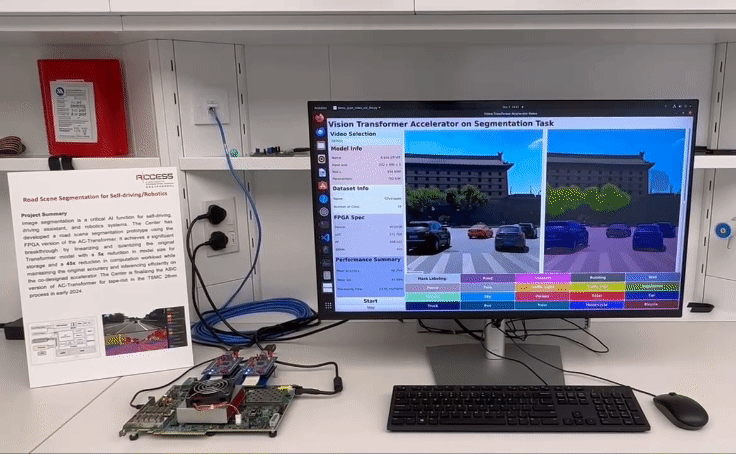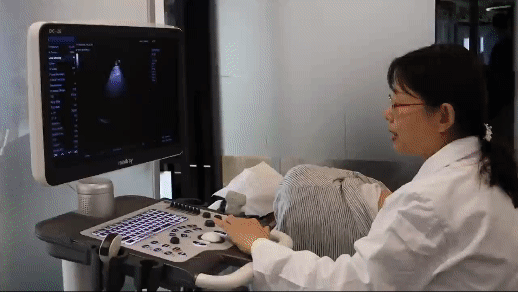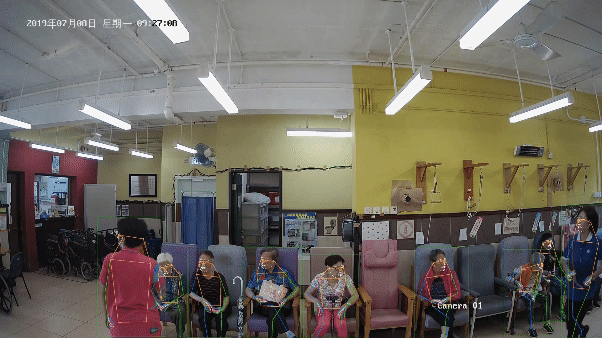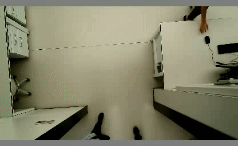Demos
Here, we show some of our completed projects and exciting demos, covering various aspects such as self-driving, robotics, scene understanding, ultrasonic image segmentation, object detection and human pose estimation. Particularly, we would like to express our gratitude to the colleagues at AI Chip Center for Emerging Smart Systems (ACCESS) for their teamwork and collaboration. ACCESS is a multi-disciplinary research center under the InnoHK initiative of the Hong Kong Special Administrative Region Government. Founded by HKUST in collaboration with world-renowned local and overseas universities, ACCESS is dedicated to advancing integrated circuit design and design automation technologies to enable novel data-centric computing paradigms to support a wide range of AI applications. You can find more information about ACCESS here.
Demos

Image segmentation is a critical Al function for self-driving, driving assistant, and robotics systems. We developed a road scene segmentation prototype using the FPGA version of the AC-Transformer. It achieves a significant breakthrough by linearizing and quantizing the original vision Transformer model with a 5x reduction in model size for storage and a 45x reduction in computation workload while maintaining the original accuracy and inferencing efficiently on the co-designed accelerator. We are finalizing the ASlC version of AC-Transformer for tape-out in the TSMC 28nm process in early 2024.

Medical imaging equipment such as ultrasound scanners cansignificantly benefit from domain-specific Al accelerators, because CPUs, GPUs, or general-purpose NPUs may not meetthe high-performance and low-power requirements for real-timeimage analysis using large Al models. We developed a real-time cardiac image segmentation prototypefor a portable ultrasound scanner using the AC-Codesign-v1 chip. In a typical cardiac ultrasound Al-assisted diagnosis scenario, a speed of 50 FPS has been achieved with very high ventricle segmentation accuracy.

The growing aging population presents significant societalchallenges for many governments. To address the need for continuous monitoring of the elderly, our team developed an innovative healthcare solution that utilizes computer vision technology for continuous and automated monitoring of the elderly's facial expressions and postures. A prototype capable of identifying 133 key points of each human subject has been built, using Ac-Codesign-v1 chip, all within a power budget of ≤500 mW.

Counting can provide useful information for public security, marketing decision and resource allocation. With the increasing requirements for automatic head counting based on digital image processing and computer vision, people counting methods become remarkable and meaningful. We proposed a head counting system based on low-bit YOLOv3-tiny. We performed quantization-aware training and sparsity pruning on YOLOv3-tiny to reduce the model size and inference overhead, enabling the real-time counting on the AI accelerator of camera side.